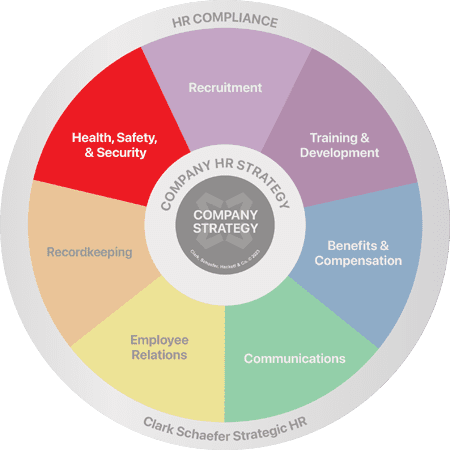Workplace Wearable Technology Safety
Last Updated on October 21, 2022 / Health, Safety & Security
Question:
Should your workplace use wearable technology to enhance employee safety and health?
Answer:
Before determining the usefulness of wearable technology in the workplace, it is important to first identify it. So, what is wearable technology? Wearables can include any type of “smart” personal device. In our everyday lives, we think fitness trackers and smart watches. In the workplace, that definition expands to include all types of “James Bond-esque” type equipment. EHS wearable tech could include such things as:
- Devices with radio-frequency identification (RFID) used to determine someone’s location;
- Devices that conduct any type of measurement gathering – air quality for example;
- Hard hats with sensors;
- Glasses with displays;
- And really any other device that provide information to assist in the safety, health, and well being of employees in the workplace.
Health and Safety professionals continue to expand their use of these items and are intrigued at the potential of these items to reduce workplace accidents and injuries and promote safety. While using such equipment, employees could be alerted to potentially hazardous conditions. For example, employees could be alerted if they are lifting an item that is too heavy or they are using unsafe movements. In the event of catastrophic events such as fires or explosions, RFID equipment could allow employers to locate staff who may be trapped. The devices could also prevent injuries by providing job activity simulation for difficult tasks, allowing time to practice and avoid potentially harmful mistakes. Using wearable technology, employers may be able to predict hazardous situations and enhance accident prevention measures.
With all of this great opportunity, why not move forward with these initiatives? There are a few things to consider. The first being cost. Wearable technology varies in price from a simple $40 fitness tracker to $5,000 smartglasses and beyond. An ROI must be considered when investing in this type of equipment, keeping in mind the value of worker safety. The second consideration is worker privacy. In 2017, National Institute of Safety and Health published a white paper regarding the ethics of the use of wearable sensors. The study reviewed the delicate balance between safety and the obvious concern, worker privacy. NIOSH suggests that employers be transparent on what data is being collected / observed, how the data is being used, and allow for employees to opt out of a program.
Technology is great! Consider cost, use, and benefit before implementation and be sure and clearly communicate with staff if you decide to take the dive into the world of wearable tech in the workplace.
Strategic HR understands your concerns with the safety and well-being of your employees. We offer expertise in health, safety and security to cover any need you may have from analyzing your safety programs to making sure your policies and procedures are compliant and protect your staff. Please visit our Health, Safety & Security page for more information on any of these services.




